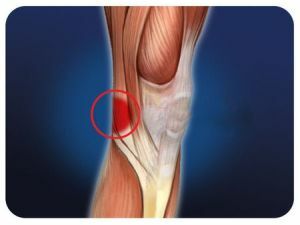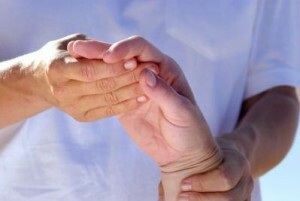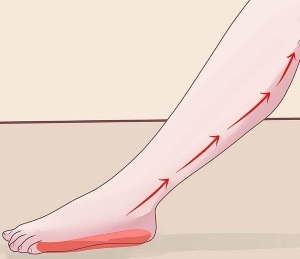 The defeat of the tibial nerve is a serious enough disease that is accompanied by unpleasant sensations in the form of severe pain, except that with neuropathy or neuritis of the lower extremities it is very difficult to move around and a feeling of severe discomfort appears throughout the body.
The defeat of the tibial nerve is a serious enough disease that is accompanied by unpleasant sensations in the form of severe pain, except that with neuropathy or neuritis of the lower extremities it is very difficult to move around and a feeling of severe discomfort appears throughout the body.
Neuritis often occurs due to nerve damage in the limbs, squeezing or various traumatic lesions.
If at the time of not providing appropriate treatment, then this disorder can go into a more complicated form of the disease.
Contents
- Anatomy of the tibial nerve
- Possible diseases
- Causes of nerve damage
- Typical clinical picture
- Symptoms of neuropathy
- Features of the neuritis
- Symptoms of neuralgia
- Diagnosis of the disease
- Medical care
- Consequences and prevention
Anatomy of the tibial nerve
The tibial nerve is a part of the plexussacral type. Its formation occurs at the expense of the fourth and fifth lumbar nerve, also in its formation the first, second and third sacral nerves participate.
The beginning of the tibial nerve is in the area where the top of the fossa poplitea is present. Further, it continues in a steep position in relation to the corner of the pit of the distal type, it is located in it in the region in the middle of the fascia and the vessels of the pit under the knee.
Then there is its continuation, which is in the area in the middle of the heads of the gastrocnemius muscle, then the nerve lies on the surface of the dorsal type of popliteal muscle, it should be combined with the vessels of the tibial type and closed by the soleus type muscle on the section of its tendon arch.
Further continuation of the nerve is located in the vengeance of the deep fascial shin leaf, being in the middle of the medial edge of the long flexor of the first finger, and also the lateral edge of the long flexor of the fingers. Then comes to the surface of the dorsal type of the medial ankle, located in the midst of the calcaneal tendon and medial malleolus. Passing under the extender of the flexors, gives two terminal branches - nn.plantari laterale et mediale( the nerves of the sole of the lateral and medial type).
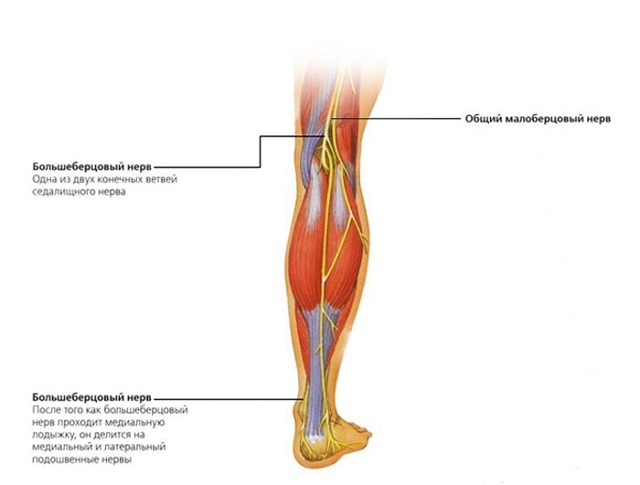
Possible diseases
Before proceeding to treatment it is necessary to find out the type of lesion of the tibial nerve, there may be several, it is worth highlighting the most common:
- neuropathy;
- neuritis;
- neuralgia.
The common thing between these diseases is that they are all accompanied by squeezing the nerve, which is manifested by severe pain. Often the pain is very strong, it does not give a normal walk, bend the foot, fingers. Often have to walk on the heels.
More on each disease:
- During this neuropathy , the tibial nerve is afflicted at the level of the fibular head. Usually compression or compression of the nerve occurs during the improper position of the limbs, for example, during prolonged sitting, most often if the leg is tossed over the leg.
- Neuritis of the of the tibial nerve is accompanied by severe pain, which interferes with normal movement. From the functionality of the
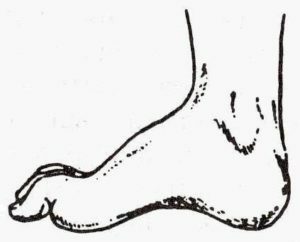 of the tibial nerve depends the innervation of the posterior surface of the tibia, soles, and the plantar surface of the fingers. With this lesion it is impossible to bend the toes on the foot, the foot also does not bend. In addition, the gait is broken, the patient can not step on the toes and moves on the heels.
of the tibial nerve depends the innervation of the posterior surface of the tibia, soles, and the plantar surface of the fingers. With this lesion it is impossible to bend the toes on the foot, the foot also does not bend. In addition, the gait is broken, the patient can not step on the toes and moves on the heels. - Neuralgia of the of the tibial nerve is usually accompanied by intolerable painful sensations at the ankle, foot and toe. The disease occurs due to the squeezing or damage of the tibial nerve, which innervates the heel or sole. The tibial nerve passes through the posterior surface of the calf, through the bone channel near the heel and then enters the heel area. During the inflammation of the soft tissues of the heel, the nerve is squeezed, which provokes the development of pain syndrome.
Causes of nerve damage
Causes of tibial nerve diseases:
- Injuries to the lower leg - fractures, cracks. During the injury, there may be swelling of certain parts of the limb. As a result, edema of
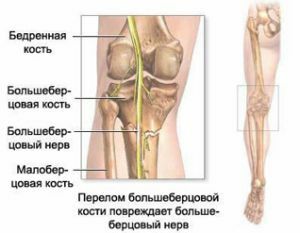 causes nerve compression and worsening of impulse conduction.
causes nerve compression and worsening of impulse conduction. - Isolated fracture of the tibia.
- Ankle dislocation.
- Various wounds.
- Tendon injury.
- Stretch of ligament in the foot.
- Repeated traumatic foot injuries.
- Foot deformities - flat feet, deformity of the valgus type.
- Long uncomfortable position of lower leg or foot under pressure.
- Various ankle or knee joint diseases - rheumatoid arthritis, deforming type osteoarthritis, gout.
- Tumor lesions of the nerve.
- Problems with the metabolism, namely diabetes mellitus. Often during this disease, neuropathy or neuritis of the tibial nerve can manifest. The risk of this disorder is increased in people who have a disease for a long time, as well as if the patient has an increased body weight. Often occurs in older people.
- Because of infectious diseases and poisonings. The nervous system can be adversely affected by various compounds of lead, mercury, arsenic.
- Violations of vascularization of the nerve.
- Prolonged treatment with drugs that have a negative effect on the state of neurons.
- During renal failure, uremia can occur - a condition in which the body accumulates a large level of end products of metabolism.
Characteristic clinical picture of
Symptoms of each of the possible lesions of the tibial nerve have some features. The doctor on the examination is initially to find out what symptoms accompany each disease and then an effective treatment is appointed.
Symptoms of neuropathy
The clinical picture of the disorder depends on the pathological process and the site of nerve damage. Symptoms of this disease are divided into basic and secondary.
Neuropathy of the tibial nerve is accompanied by the following main symptoms:
- the occurrence of problems with sensitivity, it can be painful, tactile, vibrational;
- occurrence of strong pain.
In addition to this, other associated symptoms may appear:
- the onset of edema on the legs;
- can periodically experience a sensation of goosebumps on the surface of the legs;
- from time to time there may be involuntary spasms, muscle spasms;
- the appearance of difficulties in walking, usually this is due to severe pain that covers the sole of the foot.
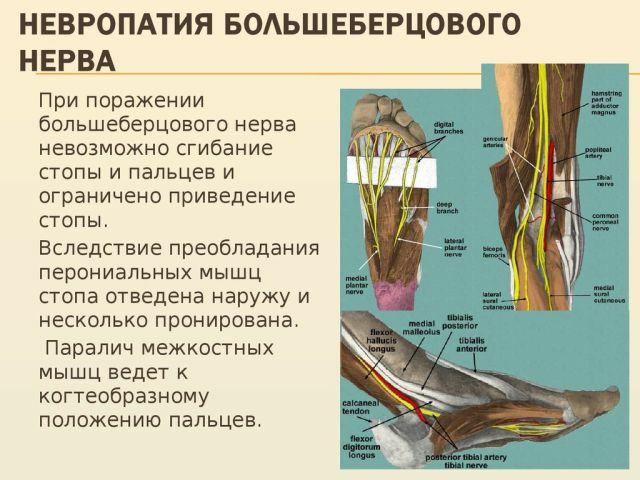
Features of the clinic for neuritis
Neuritis causes similar symptoms, as in neuropathy:
- problems with walking;
- impossibility to bend the foot;
- pain when flexing your toes;
- impossibility to walk on toes;
- problems when turning the foot inside.
Symptoms of neuralgia
The main symptoms of neuralgia include the appearance of the following conditions:
- pain in the foot;
- the appearance of a sensation of creeping creeps on the surface of the foot;
- burning sensation;
- cooling;
- pain localizes around the ankle and descends lower to the very toes;
- difficulties when walking.
Diagnosis of the disease
All the history data is collected during the examination. Find out the possible causes of the violation - perhaps the disease occurred in 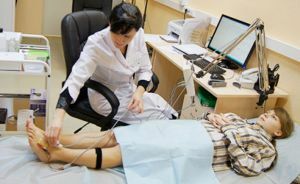 as a result of traumatic injury or endocrine disruptions, tumors and so on.
as a result of traumatic injury or endocrine disruptions, tumors and so on.
The following research is mandatory:
- electroneuromyography;
- ultrasound;
- X-ray of the ankle and foot;
- CT of joints.
Medical care
Any lesion of the tibial nerve requires the following treatment:
- if a nerve disorder has occurred due to any concomitant disease, the original cause of the disease is initially treated;
- it is recommended to wear orthopedic shoes;
- correction of endocrine imbalance;

- therapeutic blockades are performed with the use of Kenalog, Diprospan or Hydrocortisone with local anesthetics( Lidocaine);
- it is necessary to inject the following vitamins - B1, B12, B6;
- injections of Neurobin, nicotinic acid, trental drip administration, Neurovitan, alpha-lipoic acid;
- physiotherapy in the form of ultraphoonophoresis in conjunction with hydrocortisone ointment, shock wave therapy, magnetotherapy, electrophoresis;
- for the restoration of muscles are held massage sessions.
Consequences and prevention
The positive outcome of the disease depends on the degree of disruption and the factor that caused the disease. In any case, if therapy is provided at the time, the disorder is usually cured.
Usually, severe treatment is required as a result of a genetic disorder and if the disease is detected at the stage of severe nerve fiber impairment.
The main preventive measures are observance of the following recommendations:
- timely treatment of all diseases that may be the cause of damage to the tibial nerve;
- complete rejection of bad habits;
- high-grade healthy food.

